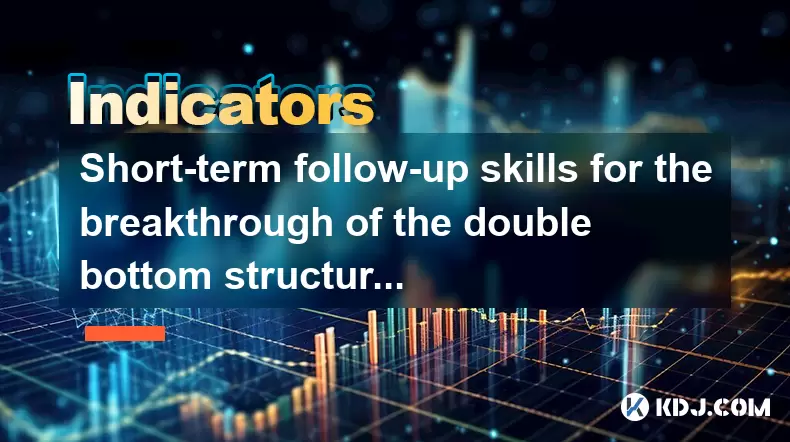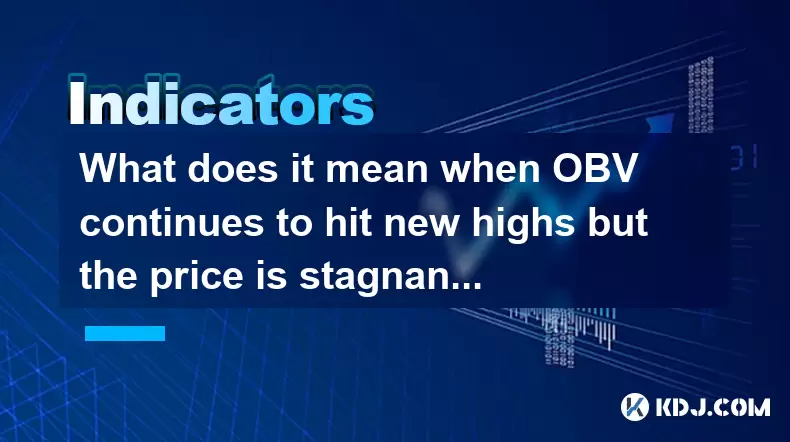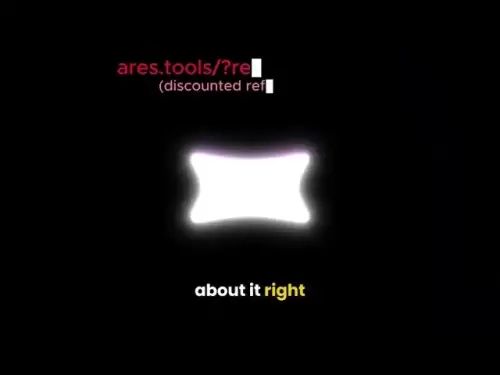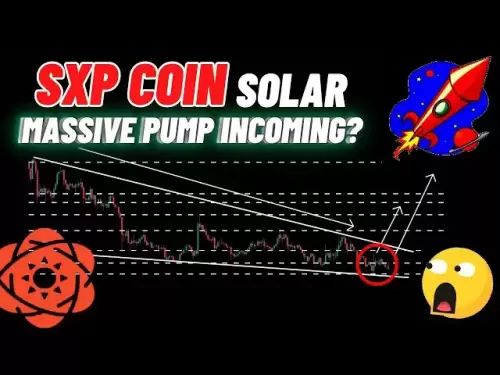-
 Bitcoin
Bitcoin $117500
2.04% -
 Ethereum
Ethereum $3759
3.02% -
 XRP
XRP $3.171
3.30% -
 Tether USDt
Tether USDt $1.000
0.03% -
 BNB
BNB $782.4
2.52% -
 Solana
Solana $187.2
5.62% -
 USDC
USDC $0.0000
0.02% -
 Dogecoin
Dogecoin $0.2380
5.26% -
 TRON
TRON $0.3175
1.07% -
 Cardano
Cardano $0.8227
4.03% -
 Hyperliquid
Hyperliquid $44.50
5.44% -
 Sui
Sui $4.020
10.07% -
 Stellar
Stellar $0.4396
6.28% -
 Chainlink
Chainlink $18.32
4.55% -
 Hedera
Hedera $0.2628
10.71% -
 Bitcoin Cash
Bitcoin Cash $554.8
4.90% -
 Avalanche
Avalanche $24.20
4.60% -
 Litecoin
Litecoin $113.7
2.31% -
 Shiba Inu
Shiba Inu $0.00001413
5.99% -
 UNUS SED LEO
UNUS SED LEO $8.984
0.11% -
 Toncoin
Toncoin $3.326
7.22% -
 Ethena USDe
Ethena USDe $1.001
0.00% -
 Uniswap
Uniswap $10.49
4.56% -
 Polkadot
Polkadot $4.092
4.02% -
 Monero
Monero $326.6
1.30% -
 Dai
Dai $1.000
-0.01% -
 Bitget Token
Bitget Token $4.570
2.49% -
 Pepe
Pepe $0.00001267
5.10% -
 Aave
Aave $297.3
3.10% -
 Cronos
Cronos $0.1344
4.10%
Short-term follow-up skills for the breakthrough of the double bottom structure of the time-sharing chart
The double bottom pattern on intraday charts signals a bullish reversal when price breaks above the neckline with strong volume, offering high-probability trade entries in cryptocurrencies like Bitcoin.
Jul 25, 2025 at 02:49 am

Understanding the Double Bottom Structure in Time-Sharing Charts
The double bottom pattern is a widely recognized reversal formation in technical analysis, particularly visible on intraday time-sharing charts such as 1-minute, 5-minute, or 15-minute intervals. This structure forms when the price of a cryptocurrency, such as Bitcoin or Ethereum, drops to a specific low level, rebounds, retraces back to that same low (or near it), and then rises again with increasing momentum. The two troughs create the "bottoms," and the peak between them is referred to as the "neckline." When the price breaks above the neckline with confirmed volume, it signals a potential bullish reversal.
Traders focusing on short-term opportunities must pay close attention to the symmetry of the two lows. The closer the second bottom is to the first in terms of price and time, the stronger the validity of the pattern. Volume analysis is critical during the formation: the first decline should show high selling pressure, the rebound moderate buying, the second dip lower volume (indicating reduced selling), and the breakout phase a sharp increase in volume. Without volume confirmation, the breakout may be a false signal.
Identifying the Breakout Point Accurately
Spotting the breakout is the pivotal moment for initiating a trade. The breakout occurs when the price moves above the neckline resistance with conviction. To avoid premature entries, traders should wait for the candle to fully close above this level. For example, on a 5-minute chart, ensure the 5-minute candle closes above the neckline rather than entering based on an intracandle spike.
Use horizontal trendlines to precisely mark the neckline. Connect the highest point between the two bottoms to establish the resistance level. Some traders use a buffer zone—entering only when the price exceeds the neckline by 0.3% to 0.5%—to reduce the risk of whipsaws. Real-time monitoring tools on platforms like TradingView or MetaTrader allow dynamic line drawing and price alerts, which are essential for timely execution.
Additionally, consider using moving averages as dynamic confirmation. If the 9-period EMA or 20-period SMA is trending upward as the breakout occurs, it reinforces the bullish signal. Pair this with the Relative Strength Index (RSI) showing a move above 50 from oversold territory (below 30) to confirm momentum shift.
Entry Strategies After Breakout Confirmation
Once the breakout is confirmed, several entry methods can be applied depending on risk tolerance and trading style.
- Wait for a pullback to the neckline, which now acts as support. This provides a second-chance entry with a tighter stop-loss.
- Enter on breakout retest, where the price briefly dips back to touch the broken resistance-turned-support level and bounces.
- Use a market order immediately after candle close above the neckline for aggressive traders, but pair it with strict risk controls.
For each entry type, define the exact trigger condition. For instance, a pullback entry is only valid if the price touches the neckline and forms a bullish candlestick pattern like a hammer or bullish engulfing. Avoid entering if the pullback turns into a prolonged consolidation or breaks below the neckline, as this invalidates the pattern.
Setting Stop-Loss and Take-Profit Levels
Risk management is paramount in short-term trading. The stop-loss should be placed just below the lower of the two bottoms. For example, if the bottoms formed at $30,000 and $29,950, placing the stop at $29,900 gives a small buffer while protecting against pattern failure.
Take-profit targets can be derived from measured moves. Calculate the depth of the double bottom (from neckline to lowest bottom) and project that distance upward from the breakout point. If the neckline is at $31,000 and the bottom at $29,900, the depth is $1,100. Adding this to $31,000 sets a target near $32,100.
Alternatively, use Fibonacci extensions—61.8%, 100%, or 161.8% of the move from the first bottom to the neckline. Traders may also scale out: take 50% off at the first target, move stop to breakeven, and let the rest run toward the second.
Monitoring Post-Breakout Price Action
After entry, continuous monitoring of price behavior is essential. Look for sustained bullish candles with expanding volume. If the price stalls or forms bearish patterns like doji or shooting stars near resistance, it may indicate weakening momentum.
Use volume profile to identify high-volume nodes above the breakout zone. If the price approaches a prior high-volume area, expect potential resistance. Conversely, low-volume gaps may allow for rapid price movement.
Also, watch for divergences on the RSI or MACD. If price makes a new high but momentum indicators fail to confirm, it could signal exhaustion. In such cases, consider closing the position early or tightening the stop.
Common Pitfalls and How to Avoid Them
Many traders fail due to impatience or misidentification. A common error is mistaking a double bottom for a consolidation range. Ensure the two lows are distinct and separated by a clear rally. If the middle peak is too flat or shallow, the pattern lacks definition.
Another issue is ignoring the broader market context. A double bottom on a Bitcoin 5-minute chart may fail if the overall market is in a strong downtrend. Always check higher timeframes (e.g., 1-hour or 4-hour) for alignment. If the daily trend is bearish, intraday bullish patterns carry higher risk.
False breakouts are frequent in low-liquidity altcoins. Use volume filters: only trade breakouts where volume exceeds the 20-period average by at least 1.5 times. Avoid trading during low-activity periods like late UTC hours unless major news is expected.
Frequently Asked Questions
How do I distinguish a double bottom from a W-bottom?
The double bottom and W-bottom are the same pattern. "W-bottom" refers to the visual shape resembling the letter W, while "double bottom" is the technical term. Both describe two price lows with a peak in between and a breakout above the neckline.
Can the double bottom appear in bearish form?
Yes, the inverse pattern is called a double top, which is bearish. It features two peaks at similar levels, with a trough in between. A breakdown below the neckline (support) signals a potential downtrend.
What timeframes are best for spotting intraday double bottoms?
The 5-minute and 15-minute charts offer the best balance between signal clarity and trade frequency. The 1-minute chart generates too many false signals due to noise, while 30-minute or higher may miss short-term opportunities.
Should I use leverage when trading this pattern?
Leverage can amplify gains but also losses. For short-term trades, limit leverage to 2x–3x if used at all. Given the narrow stop-loss zones, high leverage can lead to quick liquidation even with minor retracements.
Disclaimer:info@kdj.com
The information provided is not trading advice. kdj.com does not assume any responsibility for any investments made based on the information provided in this article. Cryptocurrencies are highly volatile and it is highly recommended that you invest with caution after thorough research!
If you believe that the content used on this website infringes your copyright, please contact us immediately (info@kdj.com) and we will delete it promptly.
- Pi Coin, Wallet Features, and Coinbase: What's the Buzz?
- 2025-07-26 18:30:12
- Worldcoin, Punisher Coin, and the Meme Coin Mania: What's the Haps?
- 2025-07-26 18:30:12
- Dogecoin Trajectory: From Meme to Mainstream and Beyond in Crypto
- 2025-07-26 17:10:14
- LasMeta, Pyth Network, NovaDrop NFTs: Decoding the Buzz
- 2025-07-26 16:30:12
- SHIB Long/Short: Riding the Shiba Inu Waves Like a Pro
- 2025-07-26 17:50:12
- VeChain (VET) Price Prediction: Will VET Reach $0.040 in August 2025?
- 2025-07-26 16:50:12
Related knowledge

What does it mean that the rebound is blocked after the moving average is arranged in a short position for the first time?
Jul 26,2025 at 10:51am
Understanding the Short-Term Moving Average ConfigurationWhen traders refer to a 'short position arrangement' in moving averages, they are describing ...

What does it mean when the price rises along the 5-day moving average for five consecutive days?
Jul 26,2025 at 08:07am
Understanding the 5-Day Moving Average in Cryptocurrency TradingThe 5-day moving average (5DMA) is a widely used technical indicator in cryptocurrency...

What does it mean when ADX breaks through 25 and +DI continues to rise?
Jul 26,2025 at 07:00pm
Understanding the ADX Indicator and Its ThresholdsThe Average Directional Index (ADX) is a technical analysis tool used to measure the strength of a t...

What does it mean when the price breaks through the 60-day moving average with a large volume but shrinks the next day?
Jul 26,2025 at 06:01am
Understanding the 60-Day Moving Average in Cryptocurrency TradingThe 60-day moving average (60DMA) is a widely used technical indicator in the cryptoc...

What does the sudden rise of ADX in DMI accompanied by +DI crossing -DI indicate?
Jul 26,2025 at 01:21pm
Understanding the DMI and Its Core ComponentsThe Directional Movement Index (DMI) is a technical analysis tool used to determine the presence and stre...

What does it mean when OBV continues to hit new highs but the price is stagnant?
Jul 26,2025 at 09:57am
Understanding the On-Balance Volume (OBV) IndicatorThe On-Balance Volume (OBV) is a technical analysis indicator that uses volume flow to predict chan...

What does it mean that the rebound is blocked after the moving average is arranged in a short position for the first time?
Jul 26,2025 at 10:51am
Understanding the Short-Term Moving Average ConfigurationWhen traders refer to a 'short position arrangement' in moving averages, they are describing ...

What does it mean when the price rises along the 5-day moving average for five consecutive days?
Jul 26,2025 at 08:07am
Understanding the 5-Day Moving Average in Cryptocurrency TradingThe 5-day moving average (5DMA) is a widely used technical indicator in cryptocurrency...

What does it mean when ADX breaks through 25 and +DI continues to rise?
Jul 26,2025 at 07:00pm
Understanding the ADX Indicator and Its ThresholdsThe Average Directional Index (ADX) is a technical analysis tool used to measure the strength of a t...

What does it mean when the price breaks through the 60-day moving average with a large volume but shrinks the next day?
Jul 26,2025 at 06:01am
Understanding the 60-Day Moving Average in Cryptocurrency TradingThe 60-day moving average (60DMA) is a widely used technical indicator in the cryptoc...

What does the sudden rise of ADX in DMI accompanied by +DI crossing -DI indicate?
Jul 26,2025 at 01:21pm
Understanding the DMI and Its Core ComponentsThe Directional Movement Index (DMI) is a technical analysis tool used to determine the presence and stre...

What does it mean when OBV continues to hit new highs but the price is stagnant?
Jul 26,2025 at 09:57am
Understanding the On-Balance Volume (OBV) IndicatorThe On-Balance Volume (OBV) is a technical analysis indicator that uses volume flow to predict chan...
See all articles

























































































